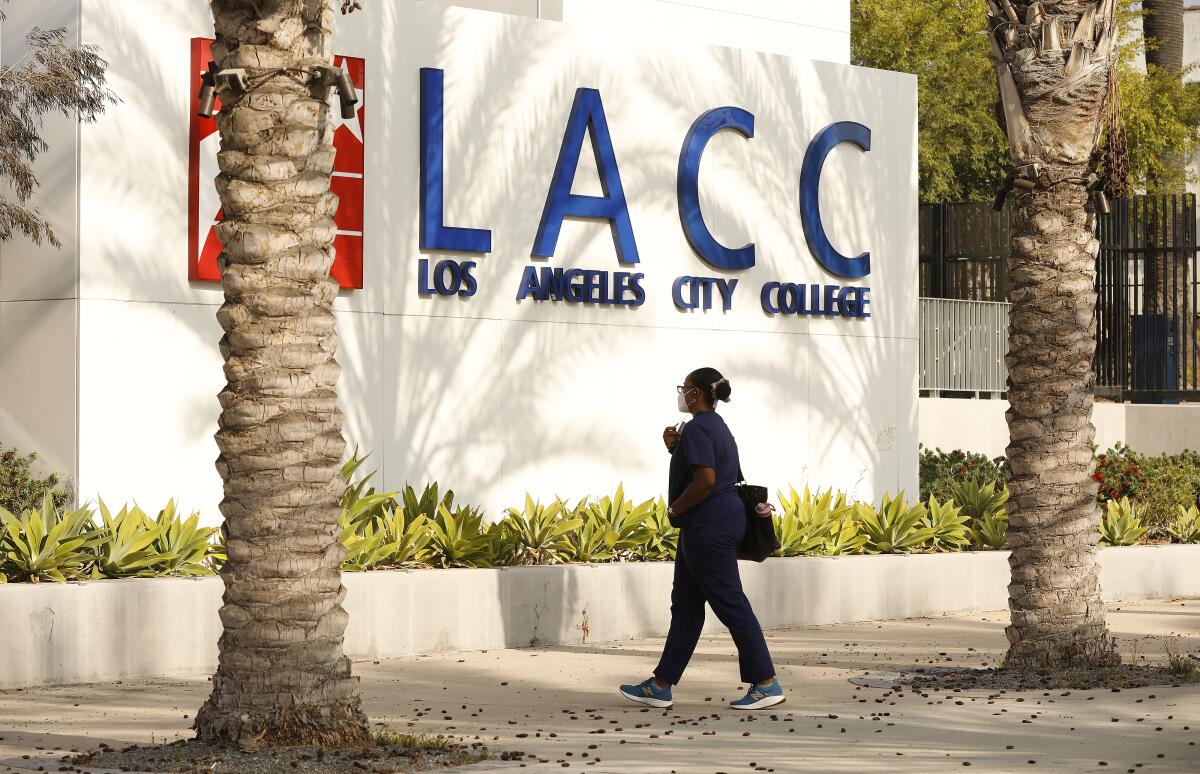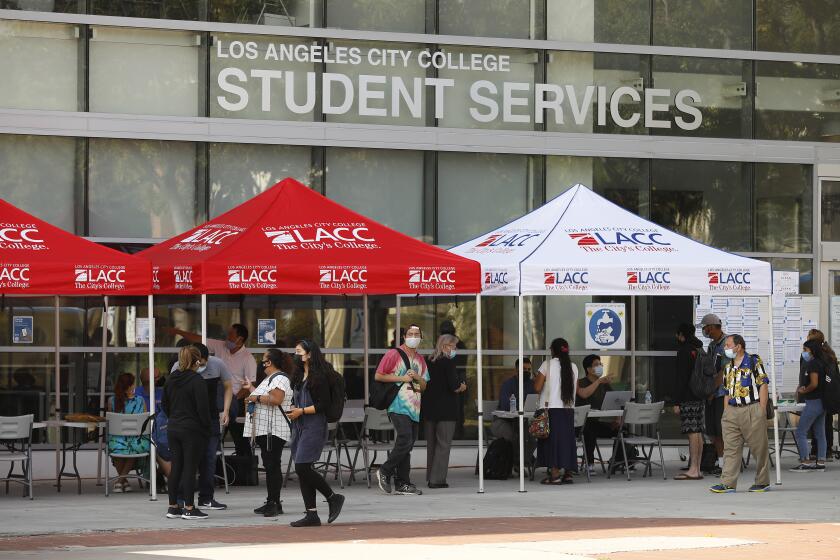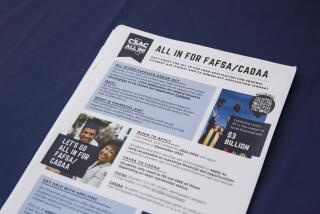Editorial: How bad was the financial aid fraud at California’s community colleges? We still don’t know, and that’s a problem

- Share via
It’s not the fault of California’s community colleges that fraudsters filed thousands of fake student applications, many through bots, early during the pandemic. At least 65,000 of them included documents requesting financial aid as federal relief money flowed to colleges. At the time, campuses were closed, classes were held online, and administrators were hectically trying to keep the colleges operating.
Once the deception was uncovered last fall, the state’s 116 community colleges had an obligation to help document the extent of the problem. But 44 have failed to report their monthly findings on fake applications to the chancellor’s office of the California Community Colleges, including all nine of the campuses of the Los Angeles Community College District. In addition, 15% of community colleges haven’t filed even their preliminary enrollment surveys for the current academic year.
The false applications were uncovered in 2021 through the work of a state financial aid officer, who noticed an unusual number of new applications from people with similar characteristics and other odd enrollment trends. At one point, there were classes made up mostly of fakers who, of course, never showed up. And though the college system announced the problems and their efforts to combat them last September, a criminal justice professor at Pierce College has continued to find hundreds of suspected phony enrollments.
U.S. education officials issued a nationwide warning Thursday after The Times reported that 65,000 fake California community college students filed financial aid applications in a massive attempted scam.
Californians still have no way of knowing how many fake applications were filed or how much, if any, financial aid went to fraudsters. For that matter, neither does the chancellor or the Board of Governors of the California Community Colleges system. They have asked the colleges to file monthly reports on both enrollment and false applicants, but have no way to compel the campuses to do so. It’s beyond comprehension that there are no laws or rules that require colleges to speedily provide requested information to the statewide governing authority.
Because most of the financial aid given to community college students during the pandemic came from federal Pell grants and pandemic relief funds, the colleges do have to report any cases they find of fraudulently obtained funds to the U.S. Department of Education, which is conducting an investigation. Colleges also must return any federal financial aid paid out fraudulently, even if they are not able to track down the perpetrators and recoup the money.
Not all of the false applications involve an attempt to swindle the colleges, according to a spokesman for the system. Some fake applicants appeared to want to enroll in order to get a student email address, which enables them to obtain discounts for various goods and services.
But the community college system needs the accurate data for its own reasons. Like many K-12 schools in California, the colleges have been trying to turn around precipitous declines in enrollment — in fall 2020, the number of students dropped from 2.2 million to 1.8 million. According to Valerie Lundy-Wagner, vice chancellor for digital innovation and infrastructure, the sudden surge in applications made it look as if enrollment had improved. Its master plan for bringing in more students depends on keeping updated, legitimate numbers, and a misleading enrollment figure would suggest the issue had been resolved.
The colleges also are funded based on how many students are enrolled, and that can’t be adequately calculated unless the colleges know the true enrollment. Fake enrollments would mean that some colleges are over-funded. The public also deserves to know the extent of the problem and how much money the schools may have lost by paying the federal government back for fraudulently obtained student aid.
A well-functioning public education system requires key data that is accurate and transparent to both the central office and the public. The Board of Governors is considering adopting a policy to clarify that when it “asks” for information, the colleges need to at least acknowledge the request within 10 days. The board should go further and require that every college turn over whatever data the system needs.
More to Read
A cure for the common opinion
Get thought-provoking perspectives with our weekly newsletter.
You may occasionally receive promotional content from the Los Angeles Times.











